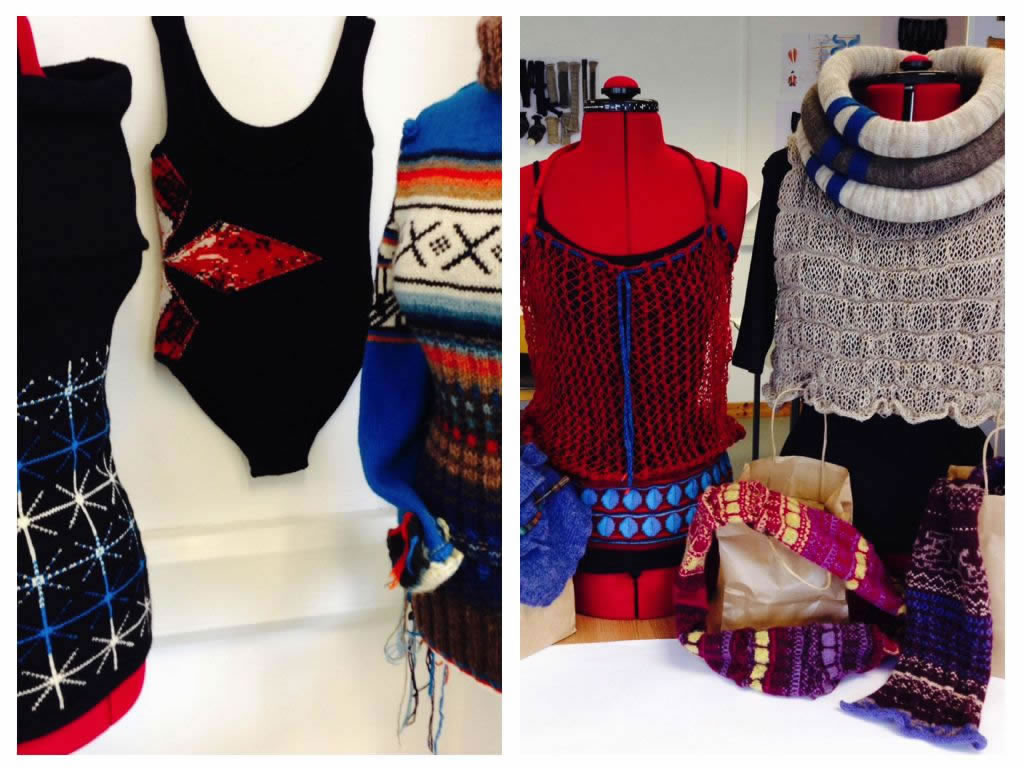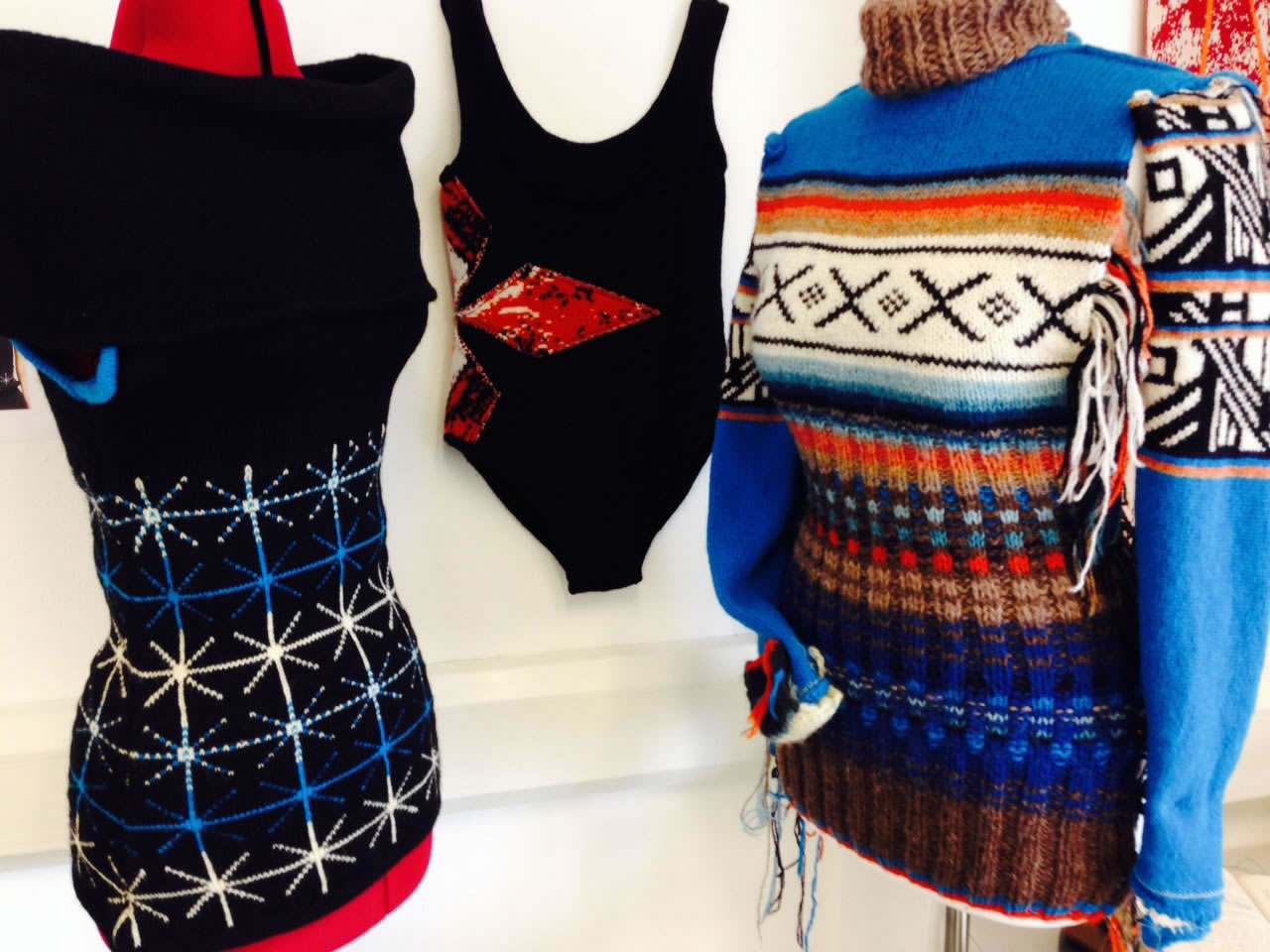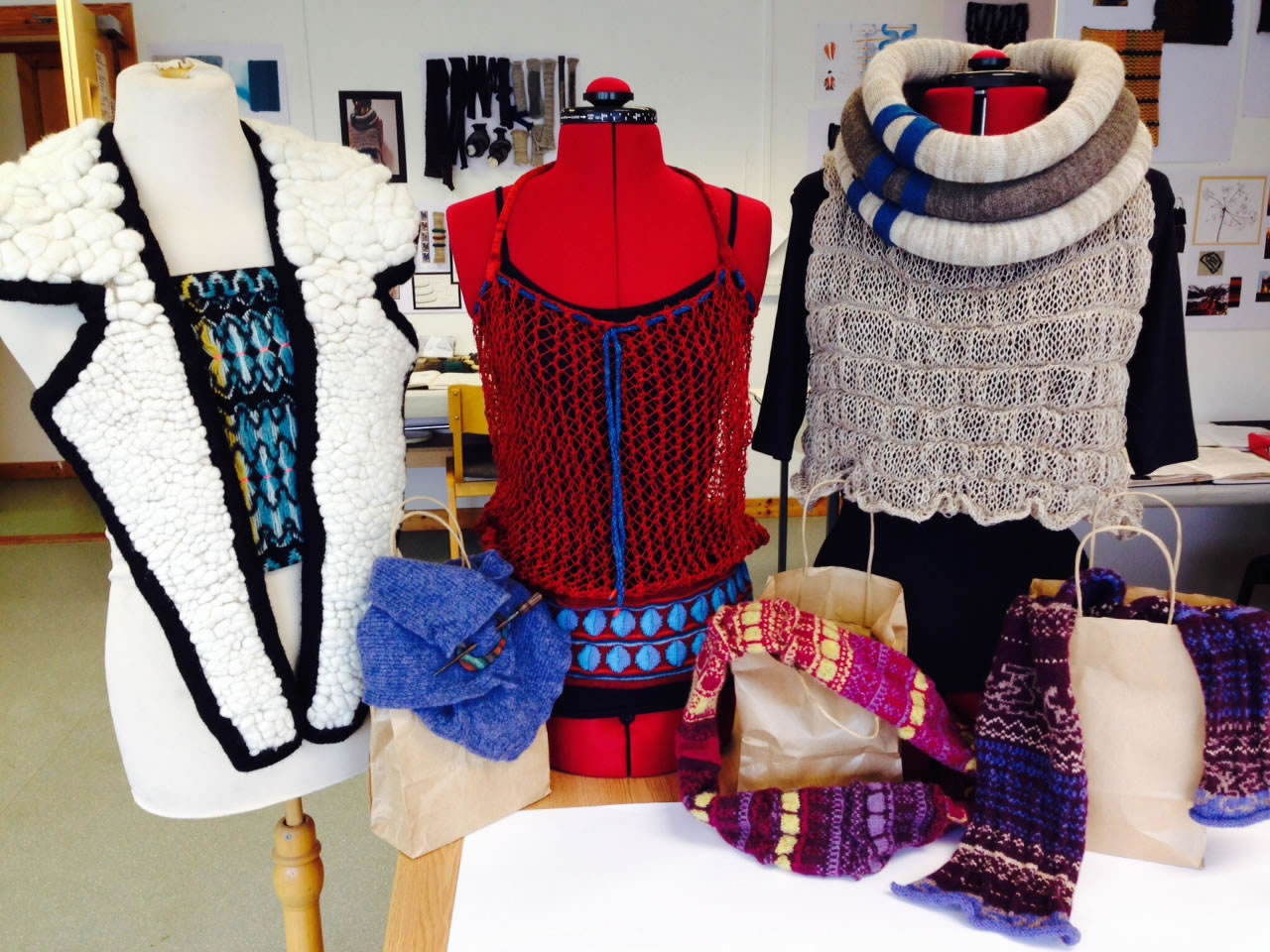Jamieson and Smith team up with Shetland College UHI textile students for a wealth of wool delight

Second year students on the BA (Hons) Contemporary Textiles course at Shetland College UHI have produced a diverse set of items in a special project with Jamison and Smith. The students were given a project brief to research and develop garments that would show off the versatility and quality of Jamieson and Smith yarns. The finished items will be on display in Wool Week, but there is an opportunity to get a sneak preview at the college end-of-year creative industries exhibition, which is on display until Wednesday 25th June.
Oliver Henry and Sandra Manson, of Jamieson and Smith, visited the college to see the results and were delighted with what the students have produced. Oliver was particularly impressed that the students managed to create completely original garments, using their imagination to really test the yarn’s ability to be moulded into sculptural forms and new knit structures. He said: ‘It’s a total transformation from the greasy wool we see come into the store from crofters and wool producers. The imagination of the designers has transformed the wool.’ Sandra was similarly impressed, noting: ‘The ideas are so different and amazing, if I had to choose I could not pick a winner!’
Malin Roberts used a combination of knitting, felting and cutting to give texture to her patterns which are dynamic and energetic. Ms Roberts used fleece to make a scarf in the shape of lapels using a carpet making technique with the heritage wool. The combination of styling and fabric construction is a demonstration of completely original knitting. She said: ‘I have been working to create a texture that’s similar to a weave. I wanted to create a 3D pattern and get away from the flat surface knit usually has. I have been using my own weave as inspiration for both the colour and the pattern. Fashion styling included influences as diverse as 1050s menswear and my Scandinavian background.’
Lynn McCormack’s work demonstrates innovative use of sculptural shape, with different tensions of knitted tubes fashioning an almost industrial collar which fits with a light lacy vest top. Two different colour one-ply yarns give a light weight to the body of the garment. Ms McCormack explained: ‘during our professional practice module I have enjoyed being able to experiment with the different weights of heritage yarns to create my garment. I am not as interested in pattern as I am in textured surfaces, so it has been great to be able to use the Shetland yarns and bring some tradition into my work in a new and contemporary way.’
Rebecca Sinclair has taken inspiration from the new industries of Shetland, using her skills with Fair Isle knitting to hand knit a garment that combines dynamic pattern with chunky wool. Her work was a development from a previous project which previously won Rebecca a prize in the prestigious Bradford Textile Competition. The combination of different yarn lengths is really impressive in her work. When speaking of her entry for the Bradford competition, Rebecca said: ‘my aim was to combine the most distinctive industries in Shetland; fishing, oil, shipping and knitwear, and reference the way women used to knit for their men folk as they went to work in cold and harsh conditions. Combining the domestic with the industrial to create a contemporary flavour of Shetland life.’
Dorothy Fraser has developed work mixing loose hand knit lacy tensions with lightly felted machine knitting, which plays with surface texture and dense felted fabric construction. Ms Fraser said: ‘through this project I have explored different weights of wool and combinations of hand and machine knitting with a range of tensions and a mixture of cotton and wool. I’ve also explored how to achieve a good garment shape.’
Kara MacKay travelled to Shetland to study the Contemporary Textiles degree. Although using the college’s Shima Seiki industrial knitting machines was completely new to her, she has experimented with the machines to produce a modern take on a vintage knitted swimming costume. She said: ‘my piece is designed for a female model to be worn in a fashion shoot. It could not actually be used as a swimming costume, as it would lose its shape. I am happy with the final piece and it looks as I wanted it to – which is a play on the swimming costume shape.’
Izabela Delnicka’s work demonstrates striking use of contrast in a tightly constrained fitted garment. Her piece demonstrates very slick, clever use of shaping, which really exploits the springiness of the yarn. Ms Delnicka explained: ‘the design of the pattern was inspired by a photograph which we looked at in the knit module, earlier in the year. My garment could be worn in two ways, with the cape down or as a snood, so you get two quite different looks with the garment. I’m very grateful that I could use Jamieson and Smith yarn to produce my garment, so I would like to thank them for donating materials.’
Joyce Leask, who was previously awarded a prize from Jamieson and Smith for another project, decided to develop a range of scarves with felting and embellishment, adding texture to her patterns which are in a Fair Isle style, but based on modern motifs. She said: ‘my main aim was to study pattern and shades to make scarves that I might sell in the future. I like to mix traditional pattern in a more contemporary look. I chose scarves as they are a popular accessory to complete an outfit, and really tried to involve new finishing techniques on the 2-ply yarn.’
The creative industries end-of-year exhibition is on display at the Gremista campus until Wednesday 25th June. Open Monday to Friday, 9.00am to 5.00pm.





